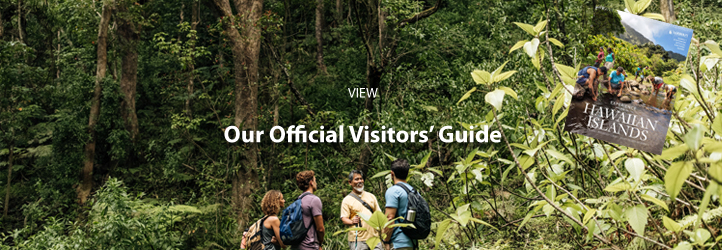 |
Natural Wonders Await in Hawai‘i
Last month the world saw the devastating fire that destroyed Lahaina, and in the aftermath, the awe-inspiring strength of a community that came together to uplift one another. Now, we need visitors to travel and mālama Maui more than ever. Support local. Explore Hawai‘i’s many natural wonders responsibly. Respectful travel to accessible areas of Maui, as well as the other Hawaiian Islands of Kauaʻi, Oʻahu, Lānaʻi, Molokaʻi and Hawaiʻi Island, is welcomed and encouraged.
The Hawaiian Islands offer many natural wonders unique in all the world, at any time of the year. Hawai‘i’s breathtaking landscapes — from its lush rainforests and diversity of mountains, sea cliffs and coastlines to its crystalline seas — offer something for everyone in search of stunning nature-created wonder. Below, please find a few of our recommendations for “can’t miss” Hawai‘i destinations of natural wonder for your client’s next visit.
Kaua‘i
Waimea Canyon is a truly amazing geological wonder. At 14 miles in length and a mile wide, with a gorge more than 3,600 feet deep, it is famously — and justly — called “The Grand Canyon of the Pacific.” Its surrounding areas, encompassing much of Waimea Canyon State Park, are a natural treasure trove of rust-colored eroded lava cliffs, emerald forests, native wildlife and rainbows. The scenic main drive through the park, Koke‘e Road, offers multiple canyon lookouts as well as several trails your hiking-enthusiast clients will love, with a variety of vistas. Just north of Waimea Canyon State Park, on the same road, is Kōke‘e State Park, which, at 4,000 feet above sea level, offers expansive views from the top of the Nāpali Coast and hiking trails through native cloud-covered rain forests and along the rim of Waimea Canyon. Kōkeʻe State Park is also a great spot to see native plant and bird species and other wildlife. Click here for entry and parking information. Pay stations are located on-site.
O‘ahu
O‘ahu has no shortage of natural attractions, including one of Hawai‘i’s most globally recognized nature-created landmarks, Lē‘ahi (nicknamed Diamond Head). A volcanic tuff cone, Lē‘ahi is believed to have formed more than 300,000 years ago from a single, short-lived undersea eruption. The cone and its interior comprise Diamond Head State Monument, a 475-acre park with a popular hiking trail to Lēʻahi’s highest point with incredible panoramic views of much of O‘ahu’s south shore. Reservations are required to visit and hike the trail and can be made here. Another of O‘ahu’s most popular natural wonders is Hanauma Bay, a snorkeler’s paradise situated within a long-extinct collapsed volcanic crater. Hanauma Bay Nature Preserve is the bay’s protected marine life conservation area where snorkelers and swimmers can float alongside more than 400 species of fish and other marine life. You’ll even occasionally see honu (Hawaiian green sea turtles) cruising the bay or sunning on its shoreline. Click here for entry and parking information and click here for mandatory reservations.
Maui
Haleakalā National Park is world-renowned for its majestic sunrises and sunsets, visible from its namesake volcano’s 10,023 foot-elevation summit. It’s a must-see for your clients. As soon as the sun is up, however, activities in this 30,183-acre sea level-to-summit park really get started. One of the best ways to explore the dormant Haleakalā volcano is by foot via a variety of summit-area hiking trails, taking in a landscape rich with area-native trees and plants, vibrantly colored windswept cinder desert and ancient lava flows. At the park’s sea-level Kīpahulu section, clients can hike the Pīpīwai Trail, which passes alongside a freshwater stream and through a diversity of forests — including a thick bamboo grove — on the way to two waterfalls. Click here for Haleakalā National Park hiking information and click here for summit sunrise reservations.
Island of Hawai‘i
The Island of Hawai‘i is home to the most National Park Service-managed sites of any single island statewide, each showcasing its own unique set of natural (and human-made) wonders and immersing visitors in traditions and history of Hawaiian culture. The most popular of the island’s National Park Service sites is Hawai‘i Volcanoes National Park, home to two of Earth’s most active volcanoes: 4,091-foot Kīlauea and 13,679-foot Maunaloa. The massive 335,259-acre park offers a variety of activities for your clients whether they’re on single-day or multi-day visits. These include scenic roads like Crater Rim Drive — with its many trailheads to superb hiking — and summit-to-sea-level Chain of Craters Road, as well as day-hiking and backcountry trails where clients can get an up-close look at ancient lava flows and new land created by more recent volcanic eruptions. All of this on the only Hawaiian Island still growing and adding land with the potential for even more natural wonders to come.
|
 |








































